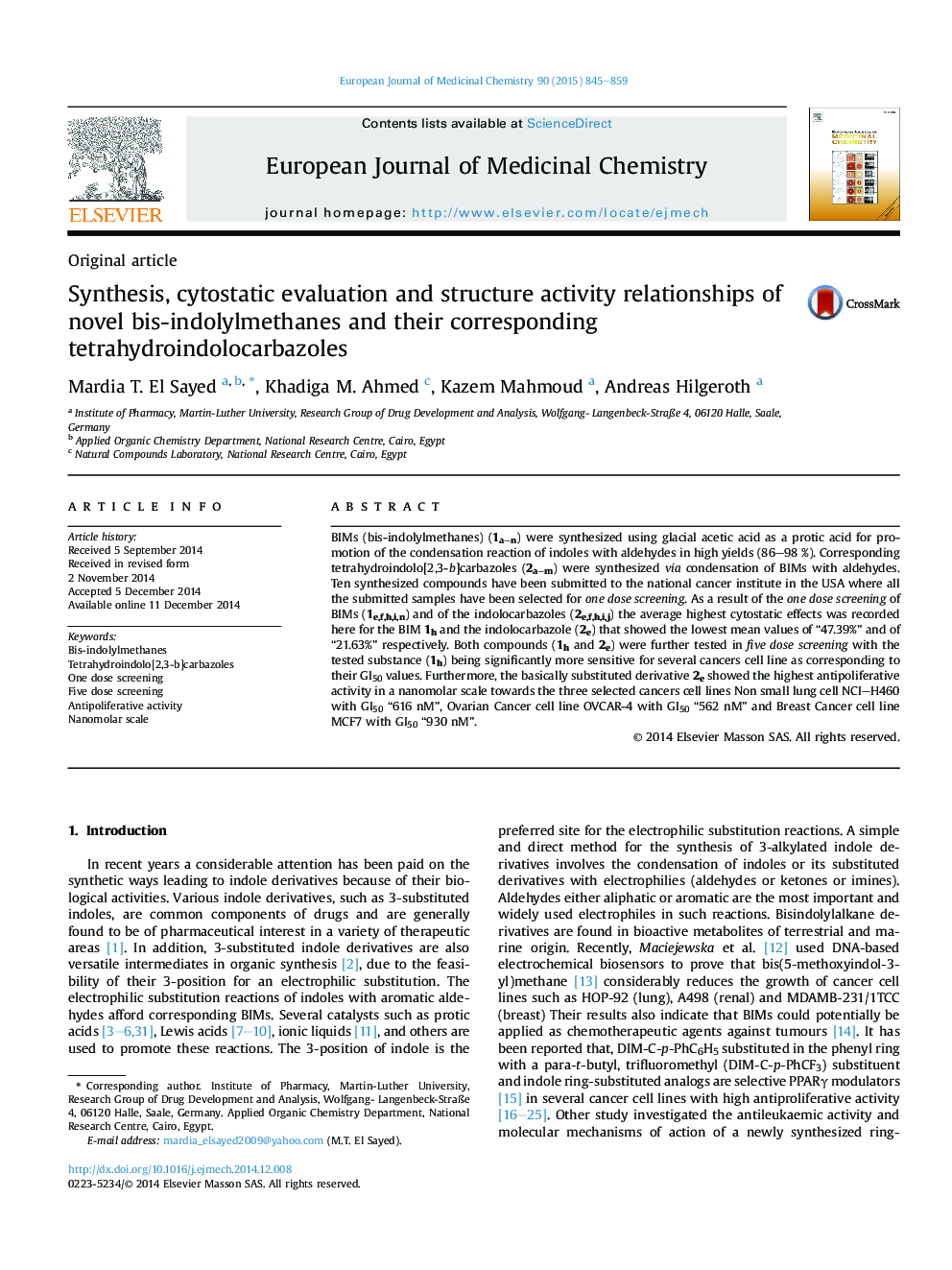| Article ID | Journal | Published Year | Pages | File Type |
|---|---|---|---|---|
| 1395527 | European Journal of Medicinal Chemistry | 2015 | 15 Pages |
•We synthesized BIMs and tetrahydroindolocarbazoles.•Ten compounds have selected by the NCI for anticancer screening.•Compound 2e gave the highest antiproliferative activity in a nanomolar ranges.•Compound 2e showed non critical cytotoxcity.
BIMs (bis-indolylmethanes) (1a–n) were synthesized using glacial acetic acid as a protic acid for promotion of the condensation reaction of indoles with aldehydes in high yields (86–98 %). Corresponding tetrahydroindolo[2,3-b]carbazoles (2a–m) were synthesized via condensation of BIMs with aldehydes. Ten synthesized compounds have been submitted to the national cancer institute in the USA where all the submitted samples have been selected for one dose screening. As a result of the one dose screening of BIMs (1e,f,h,i,n) and of the indolocarbazoles (2e,f,h,i,j) the average highest cytostatic effects was recorded here for the BIM 1h and the indolocarbazole (2e) that showed the lowest mean values of “47.39%” and of “21.63%” respectively. Both compounds (1h and 2e) were further tested in five dose screening with the tested substance (1h) being significantly more sensitive for several cancers cell line as corresponding to their GI50 values. Furthermore, the basically substituted derivative 2e showed the highest antipoliferative activity in a nanomolar scale towards the three selected cancers cell lines Non small lung cell NCI–H460 with GI50 “616 nM”, Ovarian Cancer cell line OVCAR-4 with GI50 “562 nM” and Breast Cancer cell line MCF7 with GI50 “930 nM”.
Graphical abstractFigure optionsDownload full-size imageDownload as PowerPoint slide
